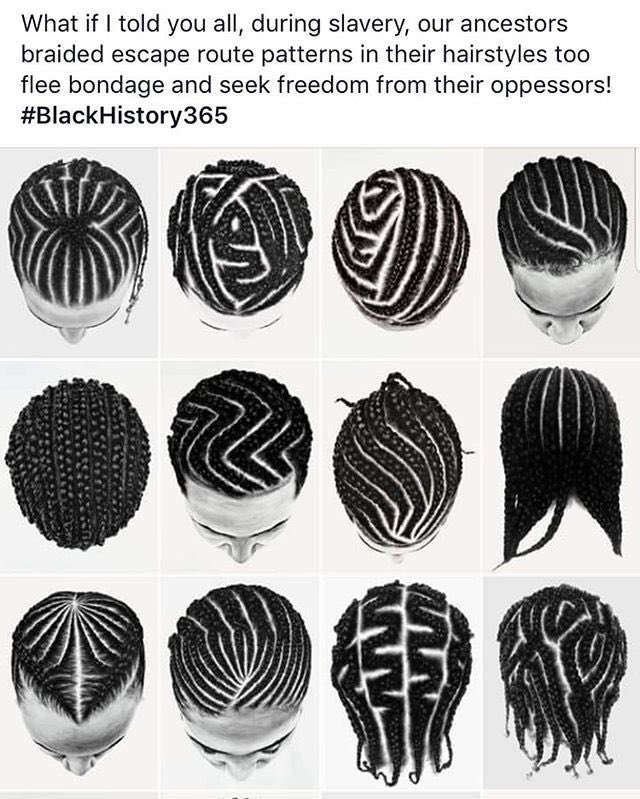history of braids and it’s cultural significance of certain styles — a thread  https://abs.twimg.com/emoji/v2/... draggable="false" alt="🥰" title="Smiling face with 3 hearts" aria-label="Emoji: Smiling face with 3 hearts">
https://abs.twimg.com/emoji/v2/... draggable="false" alt="🥰" title="Smiling face with 3 hearts" aria-label="Emoji: Smiling face with 3 hearts">
So before I begin, a lot of the information I’ll provide is stuff I’ve learned and did research on, I will provide links & other things so you can go look for yourself! But I hope this helps  https://abs.twimg.com/emoji/v2/... draggable="false" alt="🤩" title="Vom Star geblendet" aria-label="Emoji: Vom Star geblendet">
https://abs.twimg.com/emoji/v2/... draggable="false" alt="🤩" title="Vom Star geblendet" aria-label="Emoji: Vom Star geblendet"> https://abs.twimg.com/emoji/v2/... draggable="false" alt="❤️" title="Rotes Herz" aria-label="Emoji: Rotes Herz">
https://abs.twimg.com/emoji/v2/... draggable="false" alt="❤️" title="Rotes Herz" aria-label="Emoji: Rotes Herz">
Braiding is very common hairstyle especially within Black culture, and when I say Black this includes African culture as well. It can be dated back to 3500 BC. From cornrows to Dutch braids. Braids have been a sign of societal status, ethnicity, religion, and more.
Braids are considered much more than just a style but a craft form of art. It started in Africa w/ the Himba people (Namibia). They braided their hair for centuries.
In majority of the African tribes the way your hair was braided was a way to identify the tribe they were in. Braid patterns could identify their tribe, age, marital status, wealth, power, and even their religion.
It wasn’t until the 1900s that braiding became popular worldwide. People have credited Africa for cornrows, credits Egypt for box braids, credits Greece for the halo braid, credits Native Americans for pigtails and credits Europeans for the crown braid.
China gets credited for staircase braids, the Caribbean gets credited for modern cornrows (dated back to the 1970s).
So onto the cultural context..
Among Black people, braids are a go-to style. This hairstyle was designed for “kinker” hair as way of protective styling, NOT just for fashion. It protects our hair from heat, humidity, and othe damaging.
It’s impossible to understand the history of braids without understanding the history and impact of African slavery on women especially!
Through the hardships of slavery Black women had to find ways to still remain connected to their culture as they were forcefully taken from their homeland, stripped of their identity and separated from their families.
Along with still remaining connected to culture, braids became a way Black people would send secret messages to other slaves underneath their masters noses. Using them as maps to freedom.
And example from the tweet before this one: the numbers of plaits/patterns worn indicated how many roads people needed to walk or where to meet someone to escape.
Now since everyone is so confused on cornrows. Cornrows are any section of hair that is braided usually flat to the scalp and ARRANGED in rows. The name originated in the Caribbean because they were reminded of cornfields.
Today, cornrows are seen as “urban” and often worn by non-black individuals for fashion. Straight hair is genetic and as far as I know there isn’t any specific cultural tie to it.
As we take pride in our hair, certain braiding styles have more cultural significance than others, all were asking is that non-black people respect our culture and even if you feel like you’re appreciating our culture with wearing these hairstyles +
There are certain things that shouldn’t be shared because it’s sacred and significant to us.
And even if you still want to appreciate our culture do it in a respectful way, you can listen to our music, you can find inspiration from our fashion, you can enjoy our food, hell you can use SOME (empahsis on some) of our slang +
But do all that without discrediting black people and trying to further strip us of our identities like some continue to do.
sources: https://statehornet.com/2020/05/opinion-black-culture-is-not-yours-to-take/
https://statehornet.com/2020/05/o... href=" https://face2faceafrica.com/article/how-cornrows-were-used-as-an-escape-map-from-slavery-across-south-america
https://face2faceafrica.com/article/h... href=" https://www.google.com/amp/s/www.essence.com/amp/hair/respect-our-roots-brief-history-our-braids-cultural-appropriation/
https://www.google.com/amp/s/www... href=" https://everydayfeminism.com/2015/07/white-people-black-hairstyles/
https://everydayfeminism.com/2015/07/w... href=" https://www.byrdie.com/history-of-braids
crediting">https://www.byrdie.com/history-o... my mom on some info as well as my Cultural Anthropology professor https://abs.twimg.com/emoji/v2/... draggable="false" alt="😌" title="Erleichtertes Gesicht" aria-label="Emoji: Erleichtertes Gesicht">
https://abs.twimg.com/emoji/v2/... draggable="false" alt="😌" title="Erleichtertes Gesicht" aria-label="Emoji: Erleichtertes Gesicht"> https://abs.twimg.com/emoji/v2/... draggable="false" alt="❤️" title="Rotes Herz" aria-label="Emoji: Rotes Herz">
https://abs.twimg.com/emoji/v2/... draggable="false" alt="❤️" title="Rotes Herz" aria-label="Emoji: Rotes Herz">
Hope this helps https://abs.twimg.com/emoji/v2/... draggable="false" alt="❤️" title="Rotes Herz" aria-label="Emoji: Rotes Herz">
https://abs.twimg.com/emoji/v2/... draggable="false" alt="❤️" title="Rotes Herz" aria-label="Emoji: Rotes Herz">
crediting">https://www.byrdie.com/history-o... my mom on some info as well as my Cultural Anthropology professor
Hope this helps
https://twitter.com/ownedbykyla/status/1283815493359538178?s=21">https://twitter.com/ownedbyky... https://twitter.com/ownedbykyla/status/1283815493359538178">https://twitter.com/ownedbyky...

 Read on Twitter
Read on Twitter



